Oliver Cromwell MP


Oliver Cromwell MP
(1599-1658)
Master of Horse, Member of Parliament, and Lord Protector of the Commonwealth (1653-1658)
Commemorated on 16 plaques
Royal Fort - Prince Rupert's Gate. Near this spot, on 11 September 1645, Prince Rupert of the Rhine, nephew of King Charles I and Commander of the Royalist garrison of Bristol, surrendered the City to Sir Thomas Fairfax, Commander of Parliament's New Model Army and to Oliver Cromwell, his Master of Horse. This brick gatehouse is the most substantial remaining portion of the Royal Fort, a pentagonal bastion reconstructed by Prince Rupert after he had captured Bristol in 1643. Because of Bristol's strategic military position and value as a port, its capture by the Parliamentarian forces was a turning point in the Civil War.
Prince Rupert's Gate, Bristol, United Kingdom where they accepted a surrender
In the Savoy Palace, in 1658 by order of Oliver Cromwell, the Confession of Faith was drawn up. Here also, in 1661, Charles II ordered commissioners to assemble for the revision of the liturgy, which assembly was afterwards known as the Savoy Conference
Savoy Court, London, United Kingdom where they by order of, the Confession of Faith was drawn up
Oliver Cromwell 1599-1658 Cromwell lodged by this cottage on 20th August, 1648 from where he sent his dispatches to Parliament to report his victories at Preston, Winwick, and Warrington against King Charles' army
90 Church Street, Warrington, United Kingdom where they lodged
Wickham Court Oliver Cromwell and General Fairfax held a Council of War at the house before the attack on Bristol Sept 1645
Wickham Court, Bristol, United Kingdom where they held a Council of War
St. Mary's Church of Ireland erected in 1807 this parish church was built on the grounds of an ancient monastery for Carmelite friars. The town wall surrounded the monastery and were built approximately 1234 AD. The wall measured twenty-two feet high, were six feet wide at the base, narrowing to two feet at the top. It was from this south easterly aspect that Oliver Cromwell made a breach in the town wall which allowed his troops to enter the town on September 11th 1649. The town walls were 1 1/2 miles in circumference, enclosing twice the area of the walled city of Dublin.
St. Mary's Church of Ireland, Mary Street, Drogheda, Ireland where they breached the town wall (1648)
Láthair Mhainistir site of a Carmelite monastery, which in the dissolution was handed over to the corporation. The church was damaged by Cromwell, who made an entry into the town in 1649, through a breach in the town wall close by: to the south east of the church is a remnant of this wall. Among those buried here was the celebrated Henry Ussher, Archbishop of Armagh. [full inscription unknown]
St. Mary's Church of Ireland, Mary Street, Drogheda, Ireland where they damaged a church (1648)
29th August 1651 Oliver Cromwell was greeted here "with abundance of joy and extraordinary shouting" after the decisive Battle of Upton
?, Upton-upon-Severn, United Kingdom where they was greeted enthusiatically (1651)
Kings, Queens & Cromwell Saint Margaret, Queen of Scotland Revered wife of King Malcolm III (reigned 1058-93). Canonised in 1250. According to tradition, her relics (skull and hair) were hidden at Rossend Castle from c1565 to c1580 to prevent their destruction at the Reformation. King Alexander III (Reigned 1249-86) Killed in an accident near Kingswood, bringing to an end Scotland's 'Golden Age'. Commemorated by his memorial on the road to Kinghorn. King James V (Reigned 1513-42) Saw the potential of Burntisland harbour and developed it - the catalyst for the town we know today. Granted Royal Burgh status to Burntisland in 1541. Mary, Queen of Scots (Reigned 1542-67) Frequent visitor to Burntisland, staying at Rossend Castle - the scene of her notorious attempted seduction by the French poet, Pierre de Châtelard. King James VI (Reigned 1567-1625) Proposed a new version of the Bible at the General Assembly of the Church of Scotland held at Burntisland in 1601. Confirmed Burntisland's status as a Royal Burgh. King Charles I (Reigned 1625-49) Lost his potentially priceless treasure when his baggage ferry sank off Burntisland in 1633. Oliver Cromwell (Lord Protector of England 1653-58) His forces occupied Burntisland from 1651 to 1660, subjecting the inhabitants to a period of great tyranny and oppression.
Union Street, Burntisland, United Kingdom where they was
Oliver Cromwell Lord Protector of the Commonwealth attended this school about 1610
High Street, Huntingdon, United Kingdom where they attended school (1609)
A 16th century house, later an inn, the accession of James 2 was celebrated here by local magistrates and there is a tradition that Oliver Cromwell was entertained here in 1648.
30 The Bank, Barnard Castle, United Kingdom where they stayed (1647)
This is the site of the Falcon Inn where Oliver Cromwell is reputed to have stayed in October 1645 during the final siege of Basing House
London Road, Basingstoke, United Kingdom where they reputedly stayed (1644)
Oliver Cromwell 1599-1658 MP for Cambridge, Lord Protector of the British republic. At the Black Bear Inn, which stood on this site, Cromwell met with the Eastern Association to plan the Parliamentarian war effort in this region.
Market Passage, Cambridge, United Kingdom where they was
The home of Oliver Cromwell and his family. Cromwell rose to power during the English Civil Wars, to become "Lord Protector of the Commonwealth" during England's brief period as a republic in the mid 17th century. The Cromwell family lived in Ely for some ten years from 1636 to 1646.
29 St Mary's Street, Ely, United Kingdom where they was
The last battle of the Civil War was fought at Worcester on 3rd September 1651 It is for aught I know a crowning mercy Oliver Cromwell Near this spot in the City Wall stood the Sidbury Gate, which was stormed by the Parliamentarian troops. Erected by the Cromwell Association and Worcester City Council with the aid of public subscription 1993
On the canal bridge near The Commandery - Sidbury, Worcester, United Kingdom where they won a battle (1651)
Ye Olde Fighting Cocks. Reputed to have accommodated Oliver Cromwell for one night during the civil war, stabling his horse in what was is now thought to be the bar area. The underground tunnels of the Inn providing useful bolt holes in troubled times
, St Albans, United Kingdom where they stayed
In Saxon times this town was called Agmodesham The Domesday Book of 1086 records it as Elmodesham with three water mills in use along the banks of the Misbourne In the year 1200 King John granted Aversham the right to hold a market and fair every year for ever Amersham was a Borough for several centuries returning two Members of Parliament for periods between 1300 and 1832 Amersham was an active centre of dissent from the 14th century onwards and some inhabitants suffered martyrdom During the Civil War Amersham strongly adhered to the Parliamentary cause. Oliver Cromwells wife lived here In the 17th century Amersham was the home of prominent Quakers who suffered great persecution Amersham was renowned at the end of the 18th century as a centre of the black lace making industry This stone was erected by the Amersham Society 1972
Old Amersham Market Hall, 19 Market Square, Amersham, United Kingdom where they was

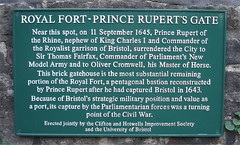
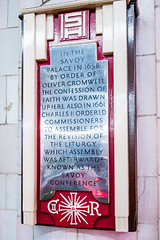
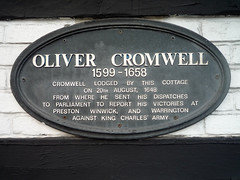






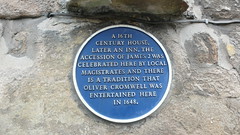
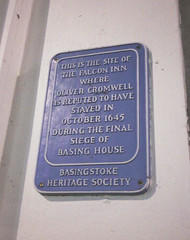


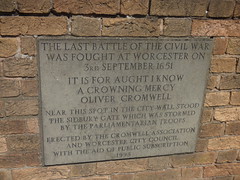
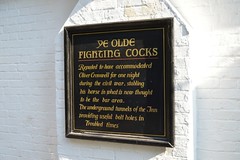
.jpg?width=250)